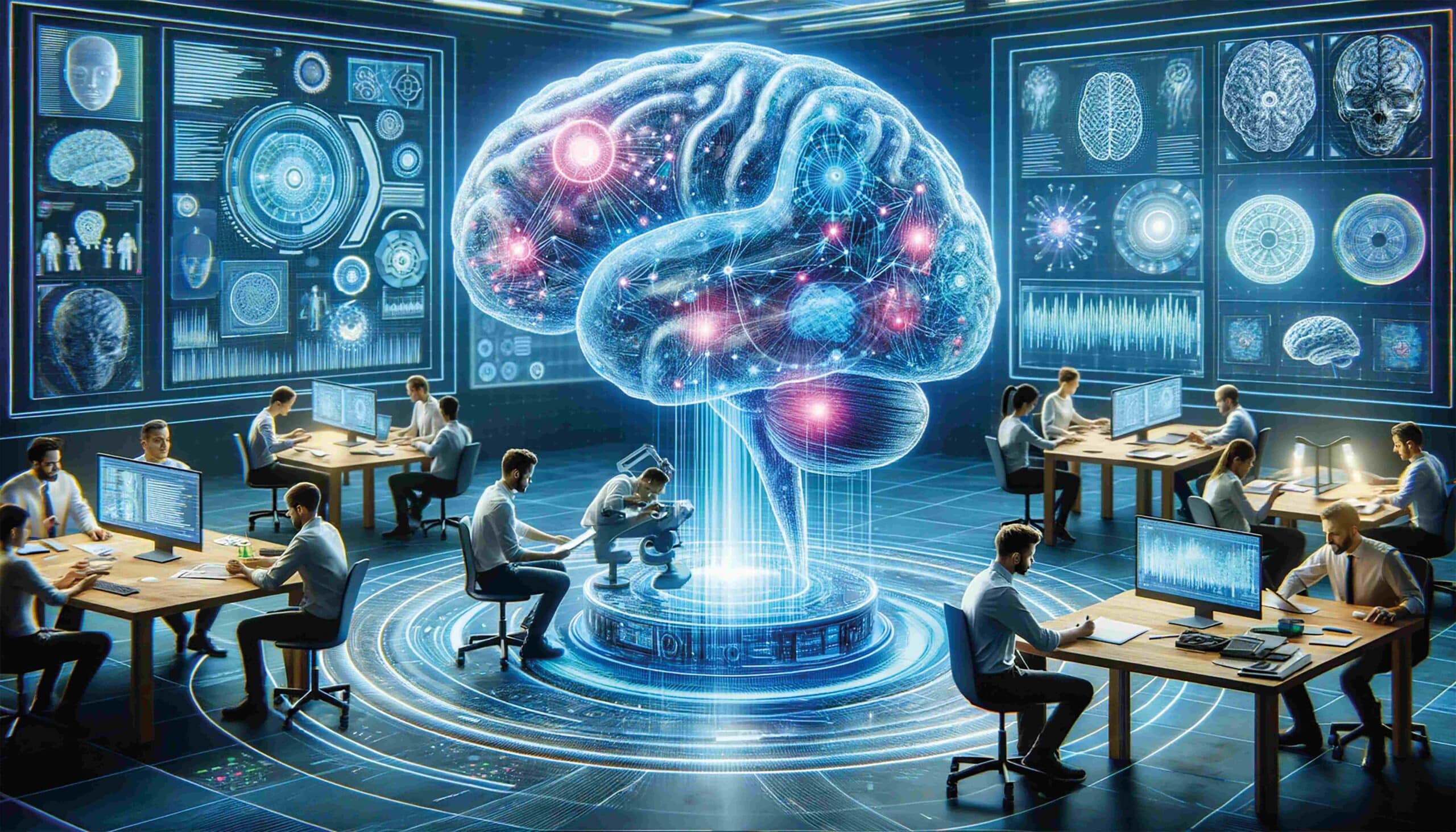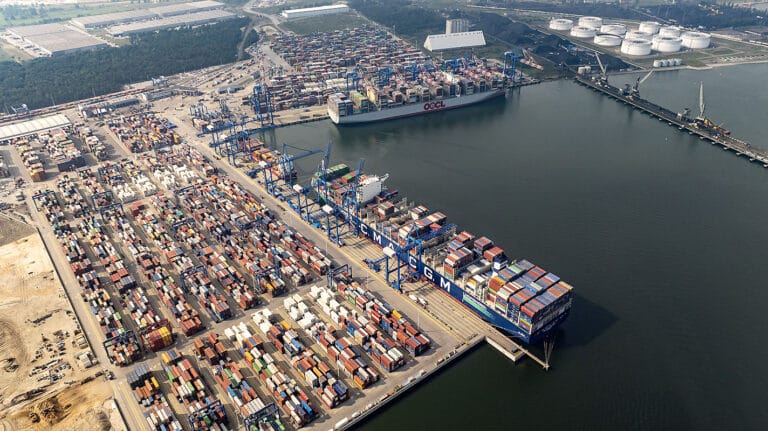How Poland stands in the AI-era
Can the process of Polish convergence at its current pace be sustained, or is it just a historical anomaly, and how does AI affect these dynamics?
These are the key questions asked in a report “From industrial to technological competence. How Central Europe can win its future in the AI era” by Spotdata and the Institute for Structural Research.
The rigidity of the global income structure is best seen by how little its distribution has changed over the last 100 years. Of the 20 wealthiest countries in the world in 1900, as many as 15 are still in this group today. From 1950 to 2020, the percentage of countries that had a GDP per capita of at least half that of the US increased from 7% to 14%. “There are glass ceilings in the structure of the global economy – hierarchies that are difficult to break. Competitive advantages and specializations mean that each country has a rather rigid position. Poland is one of the few countries that exceeded 50% of GDP per capita in relation to the technological frontier. But further advancement will become more and more difficult,” the report states. Poland has specialized in relatively simple and cheap production outsourcing. Maintaining this specialization in the long term would be risky for the economy, the report notes.
Poland ranks at the bottom of the list among OECD countries in terms of basic digital skills of the population, the report highlights. “We believe that this will be the main barrier to AI adoption,” it writes. Currently, approximately 8% of companies in the EU use AI technologies and 4% of companies in Poland. “If the path of adaptation of these technologies follows a similar path to the spread of the Internet in society, these percentages will increase tenfold by the end of the 2020s. If AI really follows the path of the Internet, today we are in the place where the Internet was at the beginning of the 21st century in terms of the economic role of this technology.”
AI in the Polish economy
In the first phase of economic transformation, the region met industrial orders in expanding supply chains. In subsequent phases, it gradually began to take over more and more advanced tasks, still basing its development model on subcontracting to foreign corporations. Societies in the region responded to the increasing demand for knowledge by reducing the fertility rate and increasing expenditure on education. In terms of basic skills of young people and adults, Central Europe does not lag behind developed countries, and in some aspects even exceeds them. At the same time, many important indicators illustrating knowledge in Poland and other countries in the region are at a higher level than in Southern Europe, which, as a peripheral area, is a natural point of reference and comparison.
However, there are certain barriers that may hinder the use of high skills for development in the AI-era. First of all, the region specializes in routine skills adapted to the industrial era. For example, Poles perform well in basic reading or numeracy skills, but they are much weaker in applying these skills in the digital world or in non-routine tasks. Moreover, the demographic recession means that the flow of new knowledge to society is, in the extreme, weaker and weaker. Smaller age cohorts are entering the labor market, which means that knowledge and competences are changing more slowly.
The report offers three key scenarios:
1. If AI fulfills the hopes of at least moderate optimists, it will be a general-purpose technology (GPT) that will change all industries and become the nucleus of product innovations in various fields. It follows that AI adaptation is not a phenomenon limited to the technology sector, and its potential is not to create digital products, but to use it to change processes throughout the economy. Therefore, the key to successful AI adoption will be educating the masses, rather than focusing on the successes of elites and the greatest talents.
2. If AI increases the dynamics of labor productivity, it will become an opportunity for Poland to maintain high GDP growth in conditions of a shrinking labor force. This is especially true since employee shortages will occur especially in professions strongly exposed to the impact of new technologies.
3. There are two barriers that Poland and the region must overcome for successful AI adoption: closing the gap between workers’ general capabilities and their digital capabilities and increasing capital resources. Poland and other CEE countries have high human capital resources, which puts them in a good starting position at the threshold of the AI-revolution. But at the same time, the barrier will be that the countries in the region are highly dependent on routine work and have insufficient digital competences of their employees. Low capital resources are also important, although this barrier may be easier to overcome than the knowledge barrier.
“To some extent, the digital revolution may also be neutral for Poland (and the region) if it mainly affects the most technologically advanced processes located in developed countries and does not cover routine activities in which emerging markets specialize. There is also a risk that technological progress will hinder convergence if it facilitates the automation of work in which Poland and the region specialize.”
“Which scenario is most likely? We assume that we can observe some elements of all of them, but the balance should be favorable for the region. We assume that AI technology will be complementary to human work.Artificial intelligence and robotics demonstrate a very high level of complementarity with human work in the sectors that drive the economic growth of the most developed countries. In economies with a higher share of lower-skilled labor (as in Poland), the benefits will be smaller. By implementing new technologies and algorithms that will reduce the labor intensity of production processes, we may be able to avoid a significant loss of international competitive advantages resulting from unfavorable demographic prospects,” the report notes.
Following the Asian tigers
The report compares the pace of convergence, i.e. the reduction of the gap in GDP per capita between individual countries and the technological frontier, i.e. the most technologically developed country in the world – the United States. Over the last 30 years, Poland has reduced this gap at a rate of 0.9 percentage points per year, Slovakia 0.8 percentage points, Czech Republic 0.5 percentage points, and Hungary 0.3 percentage points. In the case of Poland and Slovakia, this is a path very similar to what the Asian tigers achieved in the second half of the 20th century, especially the two countries that followed the most spectacular development path, from 10% to 80% of GDP per capita in relation to the technological frontier: South Korea and Taiwan. These countries were closing the gap between them and the technological frontier at an average rate of approximately 1 percentage point annually. However, at the beginning of convergence this process is obviously faster, and at the end – slower.
At the same time, it is worth noting that Poland and other countries in the region are developing faster than the countries of southern Europe – Italy, Spain and Portugal – after World War II. This comparison is important because Southern Europe can be a natural benchmark for Central Europe. These are peripheral countries with a lower average income than the core countries (France, Germany, Benelux), often occupying the position of a cheap supplier of basic industrial goods.
Currently, Poland has a GDP per capita of less than 60% of the technological border. For comparison, the level of South Korea, Japan and Taiwan is 70-80%. According to the current growth path, this still means about 10-15 years of catching up, and this path will probably be more difficult to maintain than before, among other things due to the end of the demographic dividend. Moreover, the closer one gets to the technological frontier, the lower is the statistical probability of maintaining high growth. There are very few countries that have come close to this limit.
“Convergence may simply be a change of status from a peripheral to a semi-peripheral country. This would be a pessimistic interpretation, in which the structure of the global production system is very rigid, a bit like the structure of a corporation: an analyst can become a middle manager, but his chances of promotion to the management board are slim,” the report notes.
A model of cheap outsourcing
“We cannot turn a blind eye to the fact that the economic development of Poland and the region is based largely on the execution of cheap orders for Western producers,” the report goes on. As part of expanding globalization, a new division of labor is becoming established, under which part of the production process of final goods and services (consumer or investment) sold around the world is located in countries with relatively low labor costs, but at the same time those that ensure good quality of workmanship and efficient logistics. Poland and the region perfectly fit these requirements.
One of the main drivers of the economic expansion of Poland and CEE is providing cheap labor for recipients in Western Europe. The danger of specialization is that a country invests only in skills that maintain its current position in the global production system, and there is no incentive to develop new capabilities. Fortunately for Poland and the region, there are many signals that the local economies are not in such a trap. Although wages in Poland have increased significantly over the last two decades, they are still over three times lower than in Germany. Like other countries in the region, Poland recorded a rapid increase in wages compared to Germany after joining the European Union in 2004. In 2004, the average hourly labor costs in Polish industry were only EUR 4, or 13.4% of German costs of almost 30 euros. By 2008, this ratio increased to 21.1%, but then dropped during the financial crisis. Since 2016, wage convergence with Germany has accelerated again and in 2022, hourly labor costs in Polish industry have reached 25.9%.







